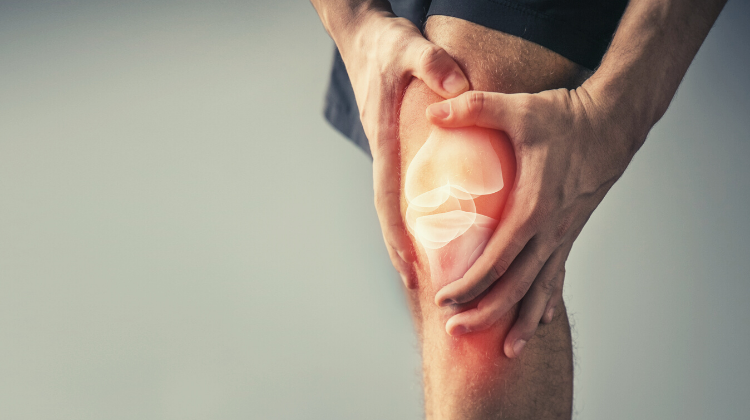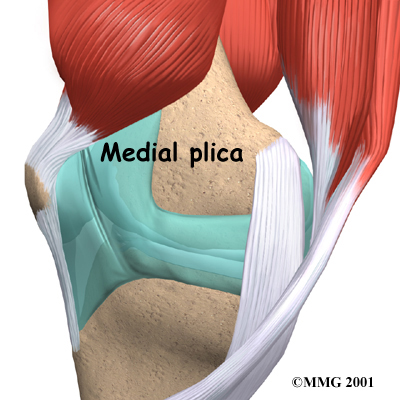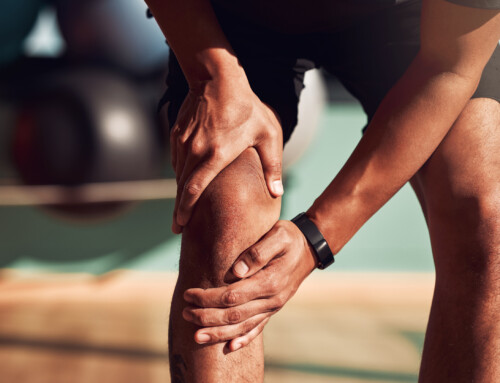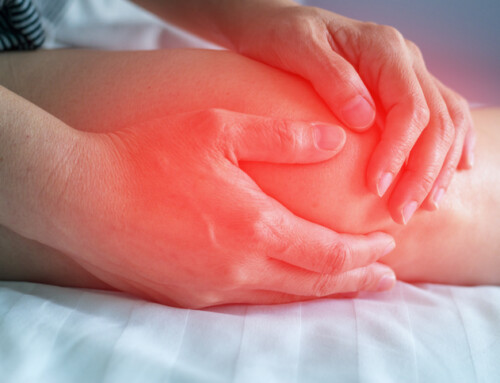By Caroline McKeighan, SPT
What is Plica Syndrome?
Plica is a fold of tissue that lines the knee joint, is formed in utero, and is typically reabsorbed by the body. The plica that typically causes issues resulting in Plica Syndrome is the medial plica, which is along the inner aspect (medial side) of the knee. While this is a natural process, the plica is not always reabsorbed by an individual’s body and remains in the knee for their entire life. For some, the remaining plica will not cause any issues, but for others, injury and overuse can irritate the plica and it can lead to pain and discomfort in the knee.
What causes the irritation?
Symptoms of plica syndrome can appear after an injury, like a hard hit to the knee, which creates inflammation and irritation in the knee itself and thus leads to irritation of the remaining plica. More commonly, irritation from overuse from things like sports, recreational running or biking, and even stair climbing can lead to plica syndrome. It is frequently seen that the muscles that help support the knee are on the weaker side and so there is increased pressure on the medial aspect of the knee as those muscles are not adequately supporting the ideal positioning of the knee during activities like squatting, lunging and stair climbing. Pain is often exacerbated after repetitive motion (frequently bending of the knee) and during or after a bout of exercise.
What is the solution?
Nonsurgical
Initially, a temporary decrease in physical activity and things like anti-inflammatory medication and/or ice can be used if the knee is swollen (inflamed) and painful. A cortisone shot, which is a shot of a very strong anti-inflammatory medication may be prescribed by an MD to help alleviate the symptoms. Physical therapy is often prescribed with the main goal being to strengthen the musculature that helps support the knee and help increase the stability of the knee while encouraging proper form in both sport specific activities and activities of daily living. Physical therapy will also work to maintain, or regain if necessary, the individual’s full range of motion at the knee without pain.
Surgical
While the majority of individuals experiencing pain from plica syndrome will experience relief through non-surgical approaches, if the pain is still present and all non-surgical approaches have been exhausted, a surgical approach may be recommended. Arthroscopic surgery, a relatively non-invasive surgery performed with a camera and small instruments, can be performed to simply go into the knee joint and remove the plica. After the plica is removed, patient’s will often go to physical therapy to meet the same goals as those who go the non-surgical route.
Upstate NY Physical Therapy Clinics
Connect with our experienced staff to discuss how we can help relieve Plica Syndrome knee pain in runners and athletes. With physical therapy clinics located in Saratoga Malta and Queensbury NY, we provide sports therapy to runners, athletes and all types of physical therapy to patients in the Albany, Clifton Park, Saratoga, Ballston Spa, Burnt Hills, Wilton, Queensbury and Glens Falls regions. Make an appointment at any of our locations by calling 518-289-5242.







